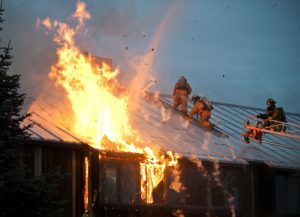
It has been a record-breaking past few years for wildfires across the nation. CoreLogic reports that in 2018 nearly 9 million acres were burned, and nine of the last 14 years have had the highest annual totals of burned acreage in record history.
Learn from the past lessons during a webinar hosted by CoreLogic on August 22 on how to deal with the risk. The webinar will begin at 11:30 am. CDT on August 22.
Topics to be covered include, how wildfire risk analysis help understand what’s at stake, the impact of demand surge and reconstruction on lost properties, and the risk compares as actuarial analysis.
One of the worst fires in recent memories was last year’s Camp Fire in Northern California, which burned more than 150,000 acres and killed 85 people, has been identified as electrical transmission lines owned and operated by utility giant Pacific Gas and Electric (PG&E). The fire in Northern California's Butte County burned more than 150,000 acres and killed 85 people.
"After a very meticulous and thorough investigation, CAL FIRE has determined that the Camp Fire was caused by electrical transmission lines owned and operated by Pacific Gas and Electricity (PG&E) located in the Pulga area" of Butte County, California fire officials said in a statement.
According to analysis by CoreLogic, the Camp and Woolsey fires left behind a trail of losses between $15 billion and $19 billion after being contained in late November 2018. The report contains the updated residential and commercial loss estimates from the wildfires based on the latest post-containment perimeter of both the Camp and Woolsey Fires.
The analysis recorded a total loss in the range of $11 billion and $13 billion from the Camp Fire, the most destructive wildfire in the state’s history. Additionally, estimated losses from Woolsey Fire in Southern California are estimated to be between $4 billion to $6 billion. Residential and commercial properties account for building, content, and additional living expenses. The estimated losses include damage caused by fire, smoke, demand surge and debris removal.The residential loss from the Camp fire alone is between $8 billion to $9 billion. Woolsey fires ravaged infrastructure worth $3.5 to $5.5 billion in the residential space and $0.5 billion in commercial losses.
Here's what else is happening in The Week Ahead:
NAR Existing Home sales (Aug 21)
Federal Open Market Committee minutes (Aug. 21)
Census Bureau New Residential Sales Survey (Aug. 23)

 DSNews The homepage of the servicing industry
DSNews The homepage of the servicing industry









